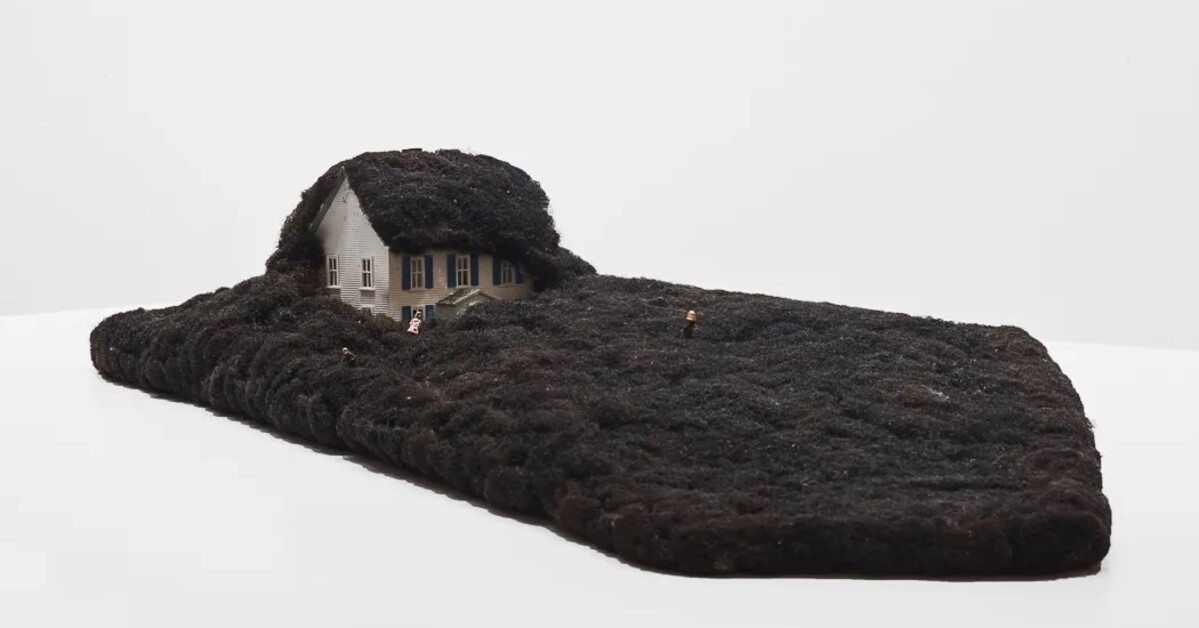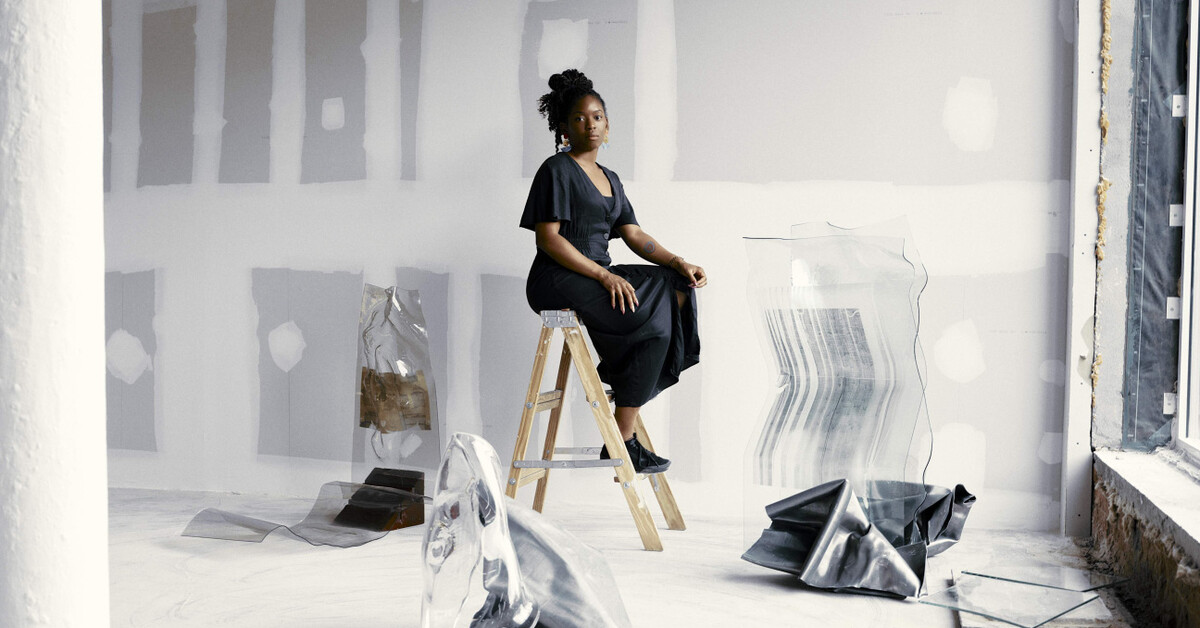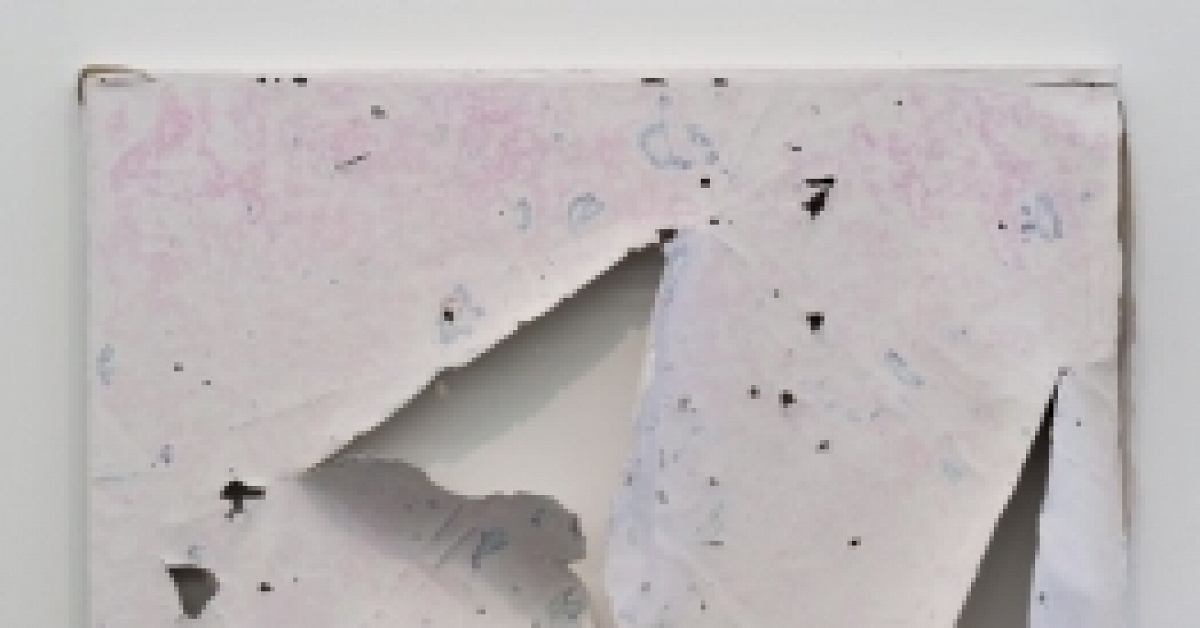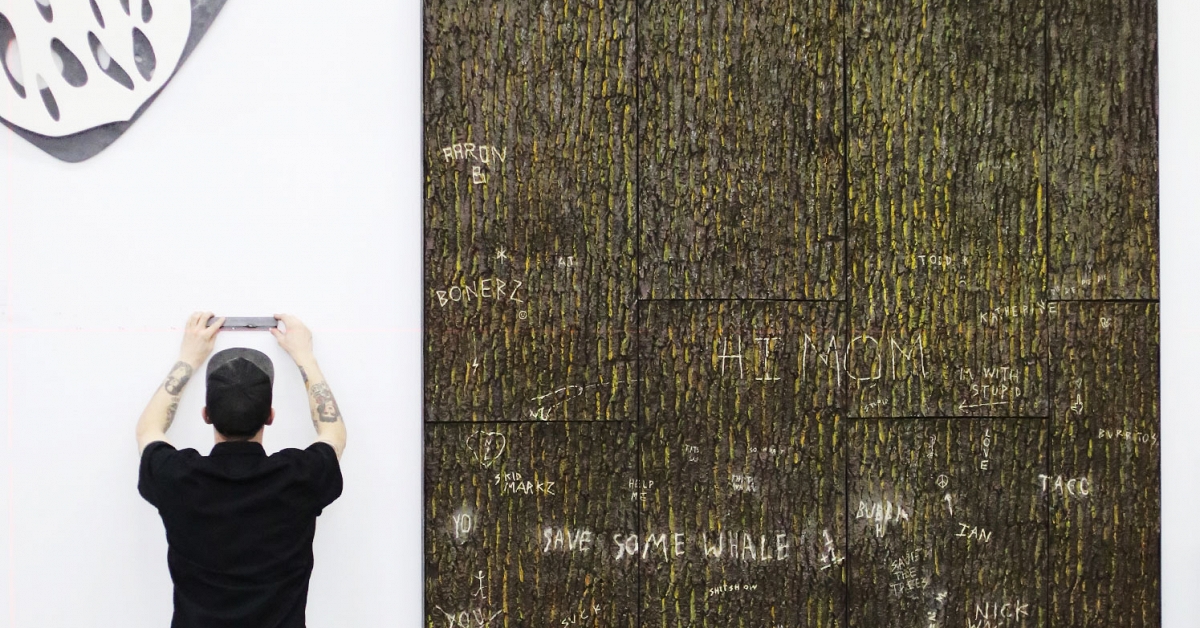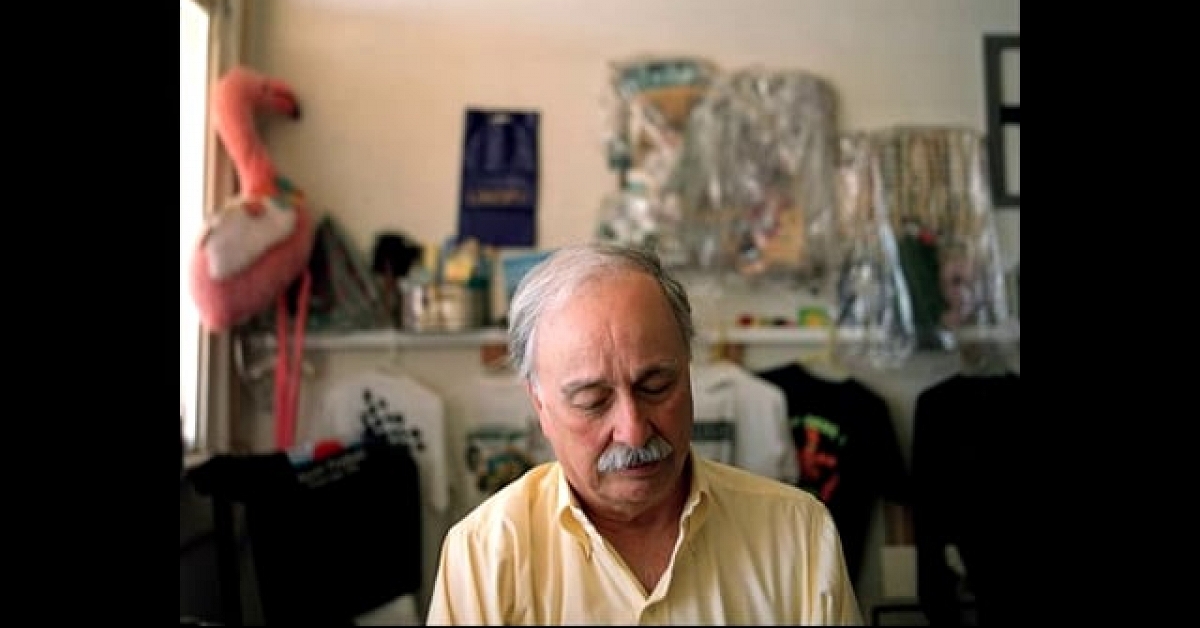At the Chicago Architecture Biennial, Artists Run Free
The New York Times / Nov 28, 2023 / by Christopher Hawthorne
Faheem Majeed, a member of the art collective the Floating Museum and one of the artistic directors of this year’s Chicago Architecture Biennial, was standing on a patch of soil on the South Side on a brisk, sunny afternoon last month. Next to him was the artist Erika Allen, a founder and the chief executive of Urban Growers Collective.
Behind them rose piles of lumber and the beginnings — the tentative outline — of a building frame for a two-story pavilion. Designed with architecture students at Columbia University, it will hold a residency for the collective, which runs programs related to urban agriculture and the arts and distributes organic produce from its eight farm sites around Chicago to local chefs and community groups.
“As you see, it’s not finished,” Majeed said of the pavilion, which the Biennial is helping fund. “But it’s not about a Biennial timeline. It’s about really leveraging the moment to actually build something that will be useful.” As a result, the site remains closed to the public until, as the Biennial website rather vaguely puts it, “later this fall.”

The Chicago Cultural Center, one of the sites of the Biennial, titled “This Is a Rehearsal.” It is intended to foster new partnerships and programs that can live on after the exhibition ends. Jamie Kelter Davis for The New York Times
The organizers of any biennial have to strike a balance between serving the expectations of visitors, participating artists and donors on the one hand and, on the other, the needs of the neighborhoods that host the installations. The latest iteration of the Chicago Architecture Biennial — the fifth since it began in 2015 — leans hard, and sometimes tumbles, in the second direction.
A central aim of this citywide Biennial, titled “This Is a Rehearsal” by Majeed and his Floating Museum co-directors Avery R. Young, Andrew Schachman and Jeremiah Hulsebos-Spofford, is to use its $2.3 million budget to develop new programs and partnerships across Chicago, or bolster existing ones, so they can live on after the exhibition ends in February.
That sensibility links it with other recent art and architecture gatherings of note, including the Venice Architecture Biennale, the St. Louis art triennial (known as Counterpublic) and Exhibit Columbus, the Indiana design festival. Each made a point this year of focusing on historical reckoning, community engagement or moving out of white-walled galleries into neighborhood spaces.
In Lesley Lokko’s curation of the recent Venice Biennale, though, there was an exquisite attention to detail to go with an inclusive, reparative definition of architectural practice. The St. Louis triennial mapped its curatorial politics effectively onto its geography, aligning its sites along the north-south spine of Jefferson Avenue to challenge established Manifest Destiny tropes of the city as little more than a gateway to the western United States.
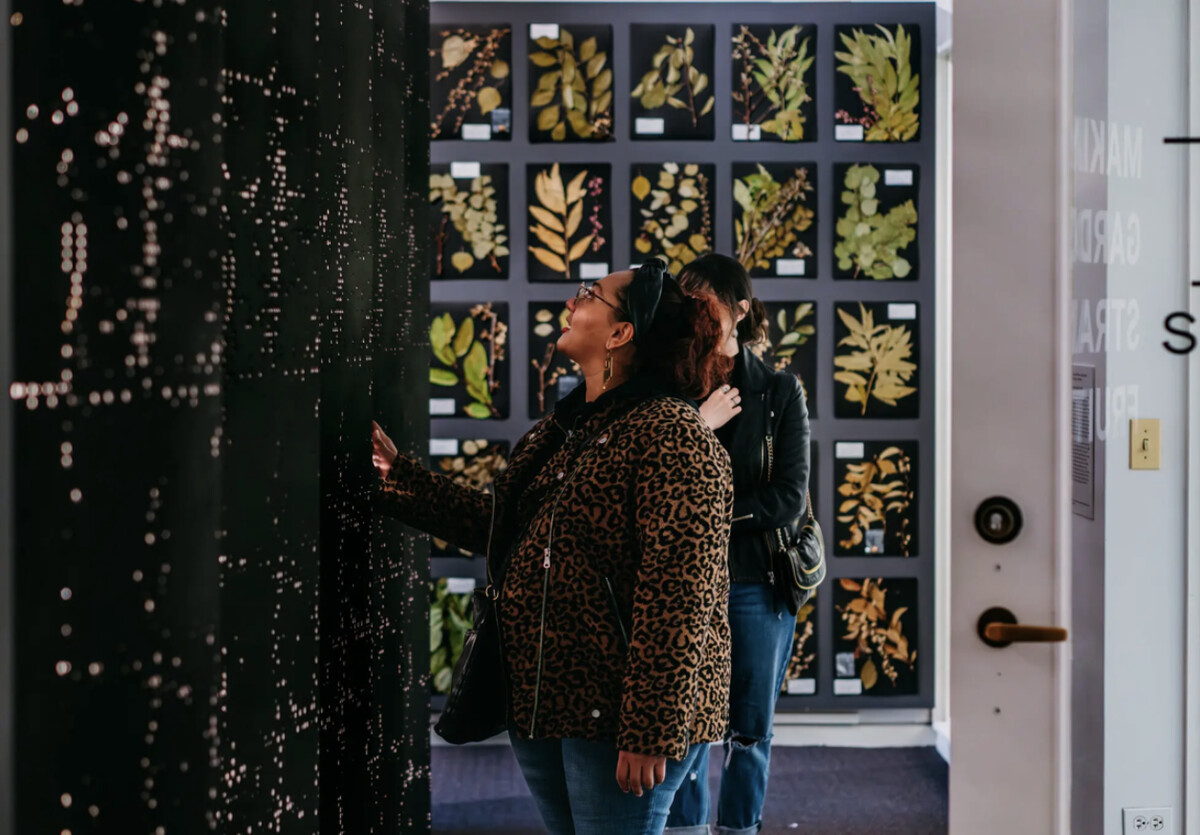
One of the installations testing out future monuments honoring an expanding, more diverse group of Americans. It is a memorial, by the artists Samuel Levi Jones and Sam Van Aken and the architecture firm; LAA Office, to the victims of a lynching in Marion, Ind. Jamie Kelter Davis for The New York Times
The title the Floating Museum has given the Biennial suggests cultural connections as wide-ranging as Nathan Fielder’s HBO series “The Rehearsal” —in which actors immerse themselves in other peoples’ lives — and an exhibition on the work of the architect Zaha Hadid, now running at the Contemporary Arts Center in Cincinnati, her first U.S. building, under the title “A Permanent Nostalgia for Departure: A Rehearsal on Legacy with Zaha Hadid.”
Drawing connections between the rehearsal and a certain kind of cultural practice is an efficient way to acknowledge the interest in process shared by many architects and artists these days: rehearsal as a place to experiment, without fear of embarrassment.(Recall the advice from Samuel Beckett, now a staple on Pinterest boards and coffee mugs: “Try again. Fail again. Fail better.”) And what is an architectural model or drawing if not a rehearsal for a planned building?
Biennial participants who offered work in this spirit — finding meaning in the transitory, fragile or fugitive — seemed best positioned to honor the Floating Museum’s goals as well as their own. At the Chicago Cultural Center, one of the home bases for the exhibition, the Broadway stage designer Christine Jones and the New York architecture firm LOT-EK have installed what they call “Theater for One,” a bedroom-size performance space made of reconfigured theater packing crates, for a single performer reading a single poem to a single audience member at a time.The poem I heard, Tina Post’s “This Is a Rehearsal,” verged on the saccharine: “Fireflies in a field of tall, July grass, with peepers singing their night song nearby/The ocean and its salty breeze/The smell of a pie baking.” No matter — the setting, intimate and plushly economical, was the thing.
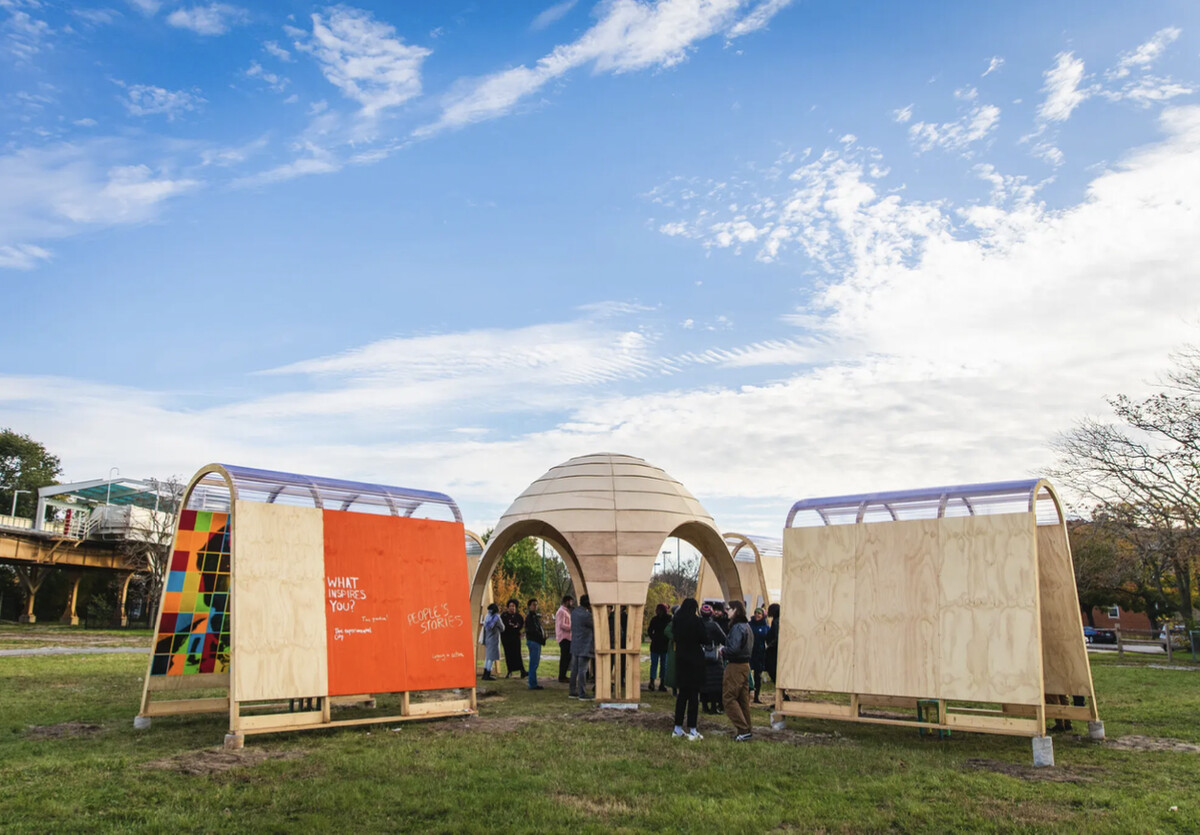
A model including a rotunda for a planned memorial to the abolitionists Frederick Douglass and Anna Murray Douglass was shown by Norman Teague Design Studios in Bronzeville, a Chicago; neighborhood. Cory Dewald
Other installations use the rehearsal framework to test out future monuments honoring an expanding, more diverse group of Americans. Not far from “Theater for One” is a preview of a planned memorial, by the artists Samuel Levi Jones and Sam Van Aken and the architecture firm LAA Office, to the victims of a 1930 lynching in Marion, Ind., a stomach-turning photograph of which inspired Abel Meeropol’s poem “Bitter Fruit,” later recorded by Billie Holiday as “Strange Fruit.” In a grass-filled lot in Chicago’s Bronzeville neighborhood, Norman Teague Design Studios has erected a full-scale plywood prototype of a planned memorial to the abolitionists Anna Murray Douglass and Frederick Douglass that will be realized, partially in copper, in a park on the West Side that was recently renamed to honor the couple.
Elsewhere the participants, with generally happy results, have chosen not to follow the rehearsal theme too literally. In a first-floor gallery at the Graham Foundation for Advanced Studies in the Fine Arts, Jennifer Newsom and Tom Carruthers, who call their practice Dream the Combine, have created a precisely choreographed exploration of Minneapolis architecture and George Floyd’s murder. Their installation includes diptychs of generic buildings — small bank branches, auto parts stores and the like —that challenge predictable narratives about the city’s recovery from the unrest that followed Floyd’s death.
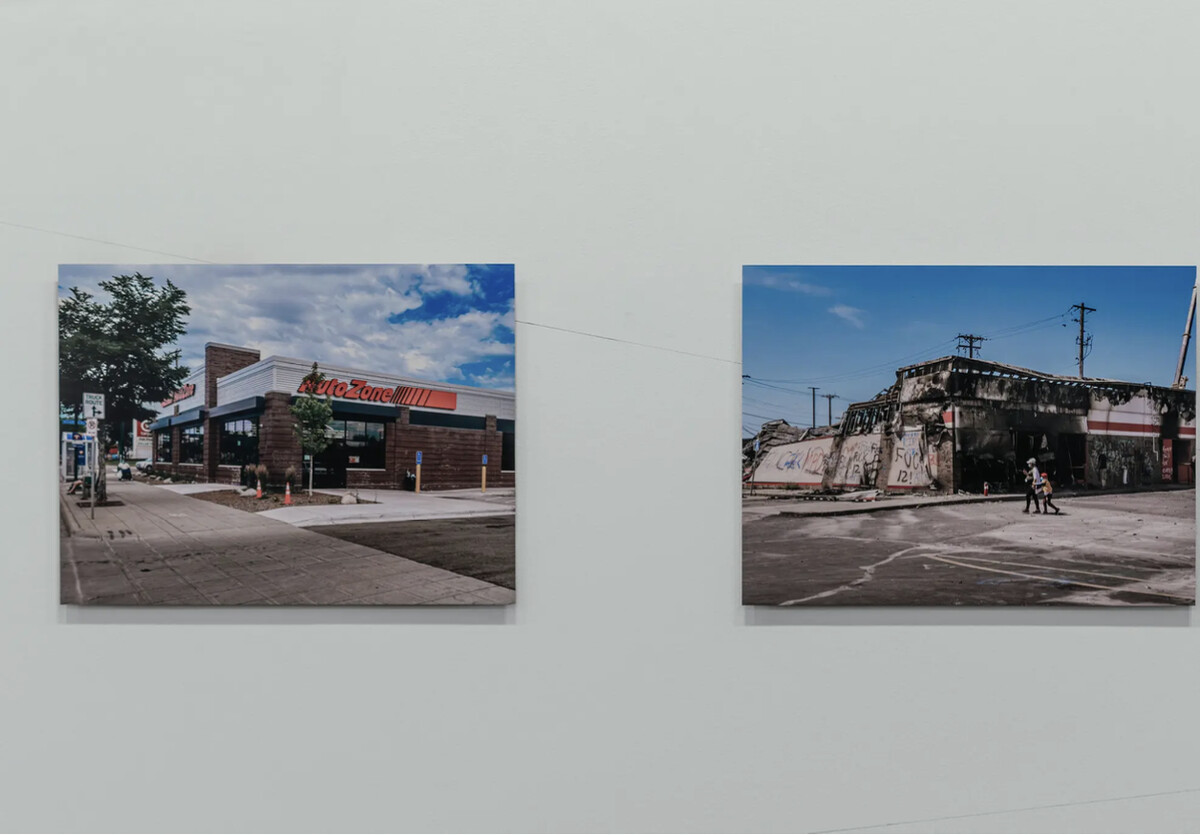
An exhibit by Dream the Combine showing photographs of Minneapolis retail buildings damaged, right, and later repaired, left, in the aftermath of George Floyd’s murder, at the Graham Foundation for Advanced; Studies in the Fine Arts. Jamie Kelter Davis for The New York Times
An intact version of a building is shown first, at left, followed at right by the same structure in ruin: burned or covered with anti-police graffiti. In fact these are not before-and-after photos, as you might assume, but what Newsom and Carruthers call “after/befores.” The first image is what the building looks like after the insurance money has been paid out, the building reroofed and repainted, the memories of the city on fire worm-holed. The status quo abides.
Upstairs, the Berlin-based artist Larissa Fassler has covered her large-scale, maplike drawings of Manchester, N.H., with dense handwritten text that combines commentary on a collapsing social safety net with snatches of overheard conversation, much of it agitated or aggrieved. The result is something like the idiosyncratic biopsy of a diseased American city. These two displays, in their marriage of steady artistic control and pointed politics, suggest what a less distractible version of the Biennial might have looked like.
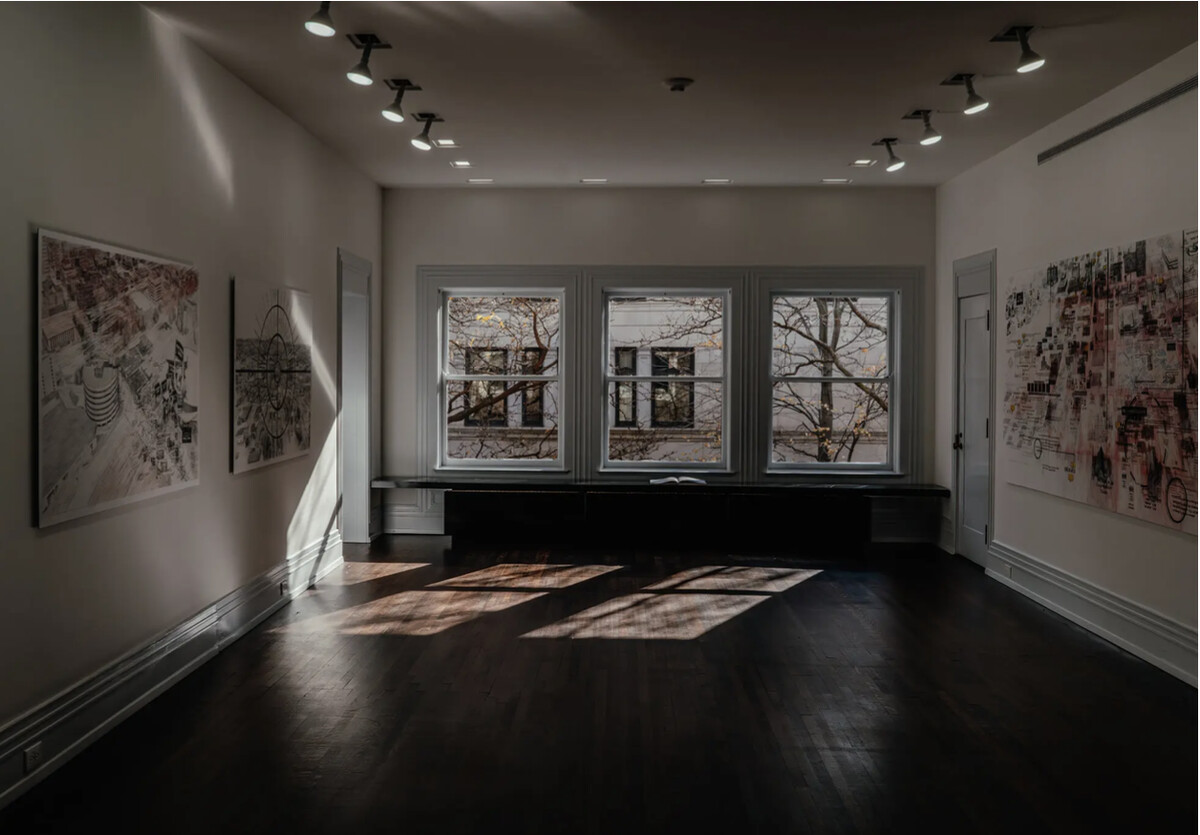
A gallery at the Graham Foundation with Larissa Fassler’s large-scale, maplike drawings of Manchester, N.H. Jamie Kelter Davis for The New York Times
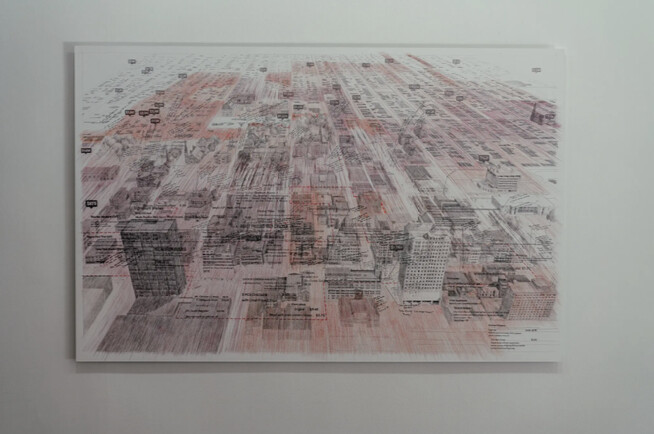
Detail of a drawing from the art exhibition “Manchester, NH, USA I-IV” by the artist Larissa Fassler, with dense handwritten text that combines commentary on a collapsing social safety net with snatches of overheard conversation. Jamie Kelter Davis for The New York Times
Back on the South Side, on a sliver of the Floating Museum’s studio property, the artist Edra Soto installed “La Distancia / The Distance,” a remarkable bus shelter made of ornamented concrete, its patterns inspired by Puerto Rican and West African designs, just feet from a Chicago Transit Authority bus stop. According to Majeed, the original plan had been to work with the C.T.A. to build the shelter in the public right of way. That process had become mired in bureaucracy, he said.
It was enough to make you wonder: Was the solution they’d settled on instead, to erect Soto’s structure on their own property, where there were few city rules to grapple with, a way to embrace street-level politics and civic engagement — key themes for this exhibition — or sidestep them?
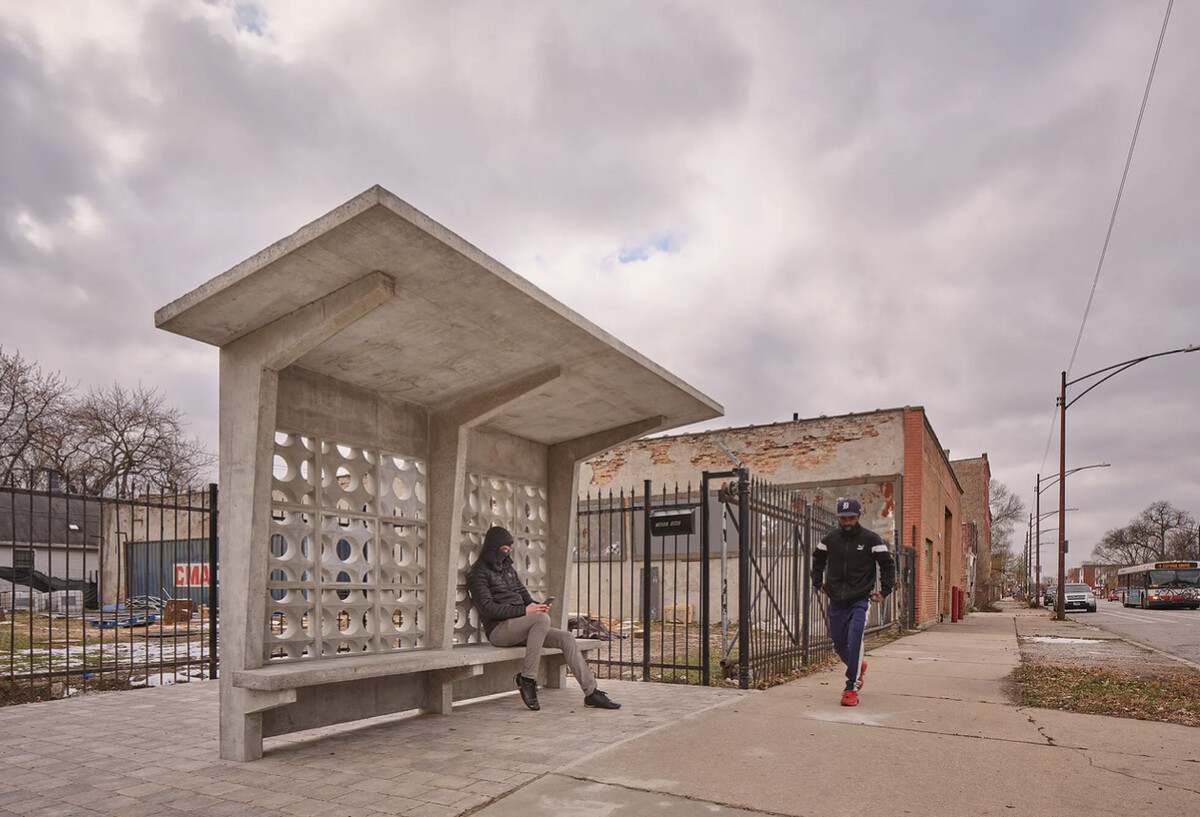
Edra Soto’s “La Distancia / The Distance,” a bus shelter made of ornamented concrete, with patterns inspired by Puerto Rican and West African designs, was installed on land owned by the Floating Museum,; the art collective organizing the Chicago Architecture Biennial. Tom Harris/CAB
A coup for the Floating Museum was the opportunity to use the colorful, vertiginous atrium of the James R. Thompson Center, the 1985 postmodern landmark that the architect Helmut Jahn designed for the state of Illinois, as a Biennial site before Google, a new tenant, moves in. Since musical performances are another theme in the show, among the exhibits is a recreation of the set for NPR’s intimate Tiny Desk concerts.
This was just the second occasion, Hulsebos-Spofford, the co-director, said, that NPR had approved a replica, or what he called a “doppelgänger.” (“Apparently the only other time they’ve doppelgänged is when Common reached out,” he said, referring to the rapper and actor.) He added that no musical performances were currently scheduled.
“We’re working on that,” Hulsebos-Spofford said, in the kind of curatorial vamping typical of this Biennial. “We’re working through that. Things take some time. You know, Taylor Swift isn’t booked for tonight.”
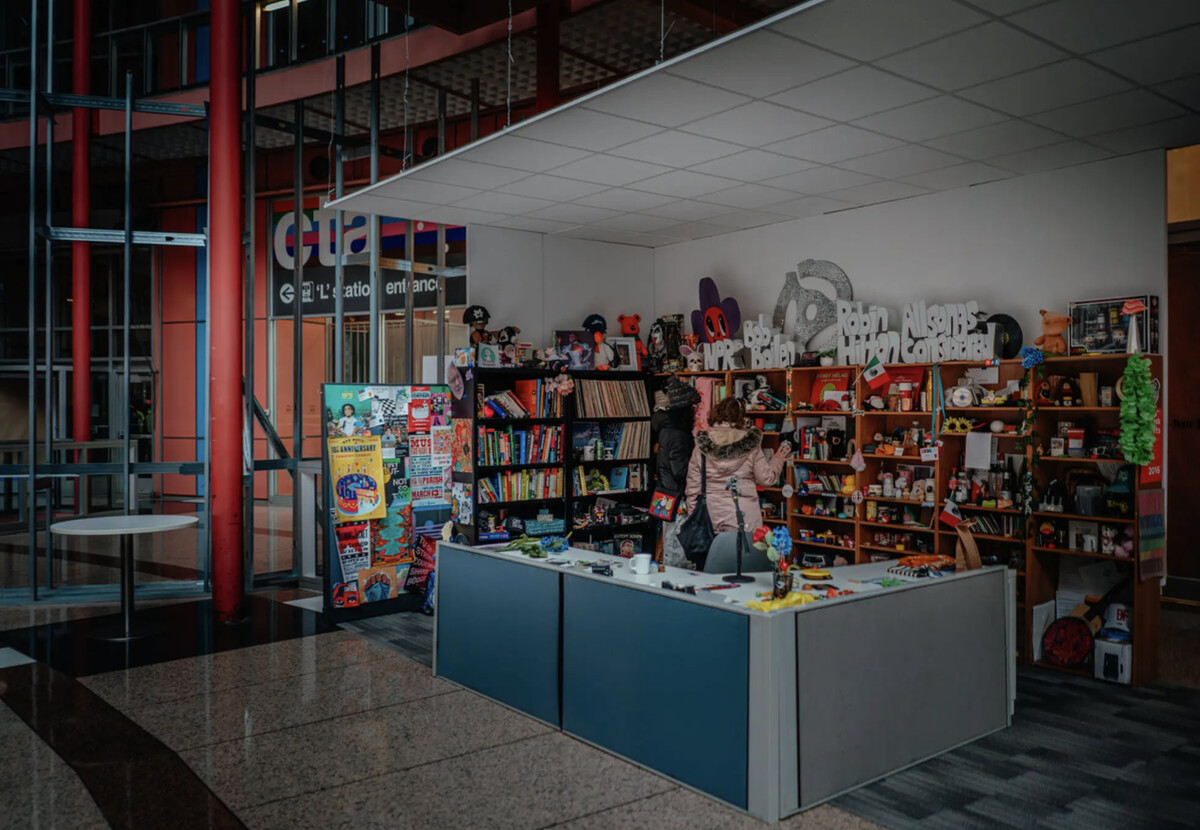
Performance was an intended theme of the Biennial. Inside the atrium at the James R. Thompson Center, visitors could interact with a replica of NPR’s Tiny Desk studio. Jamie Kelter Davis for The New York Times
So what are we to make of a biennial that rejects, in ways small and large, the idea of proceeding on “a biennial timeline?” Is this bravery? Irony? A triumph of the ad hoc over the polished and easily marketable? A principled decision to support community organizations that do good work and have obvious needs, such as Urban Growers Collective?
It may be all of those things. Or it may be something simpler. It may be what happens when you hand over the reins of an architecture biennial to an art collective. Of course they are going to see architecture mostly as a vehicle for a different — in their minds larger and more pressing — set of goals. It would be strange if they didn’t.
Surely there is a limit, though, to the architecture profession’s willingness to be used primarily as fertilizer, however delicious the locally grown vegetables wind up tasting. When architecture is content to operate as all means and no ends —serving agendas but never setting them — it may be doing little more than rehearsing its own marginalization.

